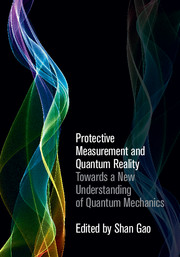1 - Protective measurement: an introduction
Published online by Cambridge University Press: 05 January 2015
Summary
Protective measurement, in the language of standard quantum mechanics, is a method to measure the expectation value of an observable on a single quantum system (Aharonov and Vaidman, 1993; Aharonov, Anandan and Vaidman, 1993). For a conventional impulsive measurement, the state of the measured system is strongly entangled with the state of the measuring device during the measurement, and the measurement result is one of the eigenvalues of the measured observable. By contrast, during a protective measurement, the measured state is protected by an appropriate procedure so that it neither changes nor becomes entangled with the state of the measuring device appreciably. In this way, such protective measurements can measure the expectation values of observables on a single quantum system, and in particular, the wave function of the system can also be measured as expectation values of certain observables. It is expected that protective measurements can be performed in the near future with the rapid development of weak measurement technologies (e.g. Kocsis et al., 2011; Lundeen et al., 2011). In this chapter, we will give a clear introduction to protective measurement in quantum mechanics.
Standard quantum mechanics and impulsive measurement
The standard formulation of quantum mechanics, which was first developed by Dirac (1930) and von Neumann (1955), is based on the following basic principles.
1 Physical states
The state of a physical system is represented by a normalized wave function or unit vector |ψ(t)〉 in a Hilbert space. The Hilbert space is complete in the sense that every possible physical state can be represented by a state vector in the space.
2 Physical properties
Every measurable property or observable of a physical system is represented by a Hermitian operator on the Hilbert space associated with the system. A physical system has a determinate value for an observable if and only if it is in an eigenstate of the observable (this is often called the eigenvalue–eigenstate link).
- Type
- Chapter
- Information
- Protective Measurement and Quantum RealityTowards a New Understanding of Quantum Mechanics, pp. 1 - 12Publisher: Cambridge University PressPrint publication year: 2015
References
- 1
- Cited by



